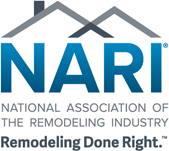
Knowing the basics of interior design can help you make informed decisions when planning an interior remodel, whether you’re making your own plans or are in discussion with a remodeler. In today’s post, local home renovator DreamMaker Bath & Kitchen of Burlington County discusses the key principles of interior design.
Key Principles of Interior Design
1. Unity & Harmony
It’s important to think of the house as a whole when designing the interior. Inexperienced designers and DIYers often make the mistake of designing adjoining rooms like they’re completely different spaces. A common theme or design element can create a unified and harmonious look throughout the house while allowing room for the occupants to express their own style and taste. One way to achieve this is through the use of a unifying color scheme. By using varying shades of a two-, three- or four-color palette, you can achieve a cohesive look throughout the house.
2. Balance
In interior design, balance refers to the equal distribution of visual weight. There are three types of visual balance: symmetrical, asymmetrical and radial. Symmetrical balance is common in traditional home styles. For example, a floor plan may be designed so that one side is the mirror of the other. Asymmetrical balance brings a modern and casual feel. Balance is achieved by choosing dissimilar objects or design elements that complement each other. Lastly, radial symmetry is created when design elements are arranged from a center point.
3. A Focal Point
The purpose of a focal point is to draw attention and encourage further viewing. A well-designed interior space has at least one focal point, and a good home remodeler can work with you to establish the focal point of each room, which can be anything from a television set to a fireplace – or even the view outside the windows.
4. Rhythm
In interior design, rhythm involves repetition of visual patterns to create continuity and a sense of between spaces. Design mechanisms such as repetition, progression, transition and contrast are helpful when trying to come up with a good rhythm within your home. That’s not to say that you should have repeating patterns akin to wallpapers or tile. Rather, rhythm should lead the eye from one design element to another, much like how rhythm in music will tell you when the next beat will fall or when the chorus will come in.
5. Details
Details is the element of interior design that takes the most work. The choice of fixtures, the color palette, even the window treatments add detail to the interiors. Small details can make the difference between derivative and authentic design.
Let’s Start a Conversation!
Searching for a “remodeling contractor near me”? Look no further than DreamMaker Bath & Kitchen of Burlington County. To get started with a no-obligation consultation, call us at (856) 656-4488 or contact us online!




